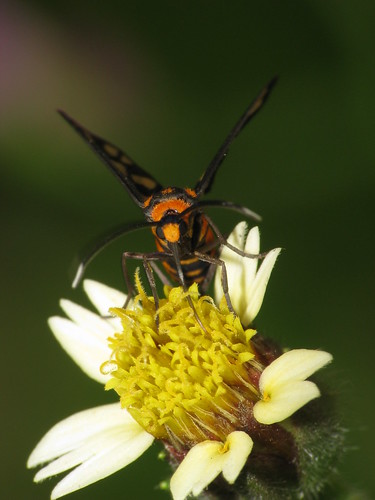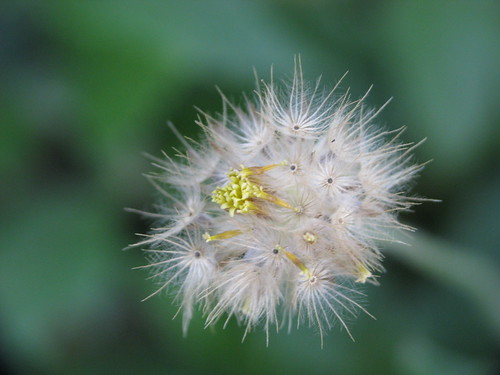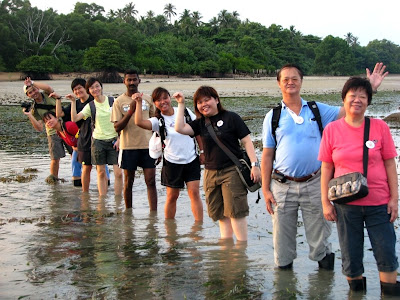Coat buttons (Tridax procumbens) belong to the sunflower or daisy family (Asteraceae). Native in Central America, this plant was introduced as an ornanment but spread so quickly that it is now considered as a weed.
Many animals pollinate the flowers of the coat button. All the photos were taken at the same locality on the same day :). Above is a day flying moth (Syntomis huebneri). You can see the long proboscis of the moth reaching into the inflorescence (known as a capitulum).
And burying its head into it in order to reach the nectar!
Besides that, a honey bee was buzzing nearby doing the same action ^^
As for the fruits? There are many long feathery hairs called pappus that helped it to drift in the wind, helping it to disperse efficiently. No wonder it can be found everywhere.
Even tiny things can be amazing if u take a closer look at them!





 My Seahorse Group today were a bunch of fun-loving prison officers, and they were striking a seahorse pose! ^^
My Seahorse Group today were a bunch of fun-loving prison officers, and they were striking a seahorse pose! ^^ Just as one day before, we managed to spot an acron worm "shitting"!
Just as one day before, we managed to spot an acron worm "shitting"!

 A red swimming crab (Thalamita spinimana) was spotted near the reef edge. It had only 3 walking legs and one pincer left! However, if it can survive till its next moult, new legs will grow out again.
A red swimming crab (Thalamita spinimana) was spotted near the reef edge. It had only 3 walking legs and one pincer left! However, if it can survive till its next moult, new legs will grow out again. A pufferfish (Family: Tetraodontidae) are one of the most posionous fishes due to a toxin, tetrodotoxin found inside its body. This lethal posion is produced by bacteria, which is acquired through food. Hence, it is said that those pufferfish reared in captivity are not posionous.
A pufferfish (Family: Tetraodontidae) are one of the most posionous fishes due to a toxin, tetrodotoxin found inside its body. This lethal posion is produced by bacteria, which is acquired through food. Hence, it is said that those pufferfish reared in captivity are not posionous.









